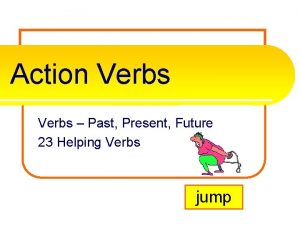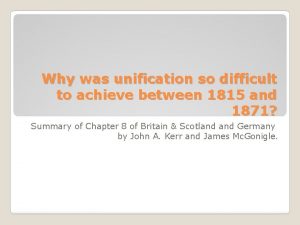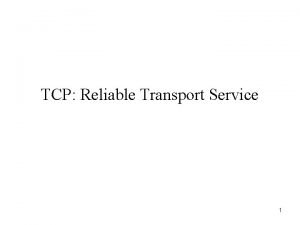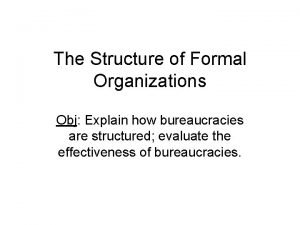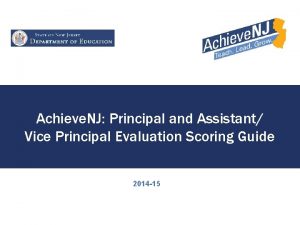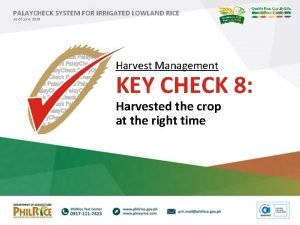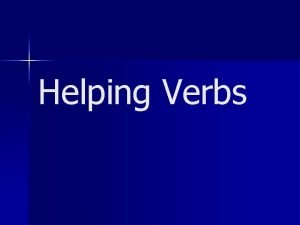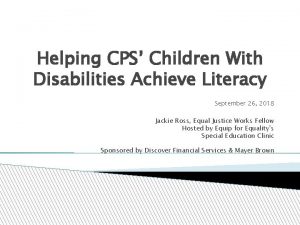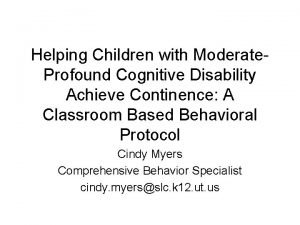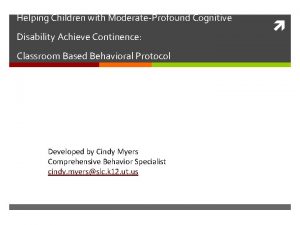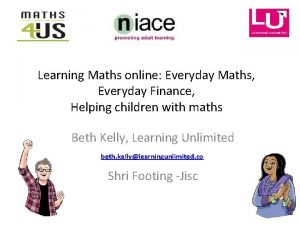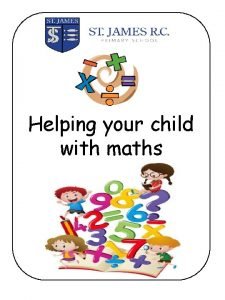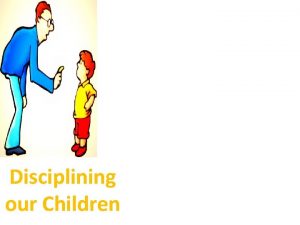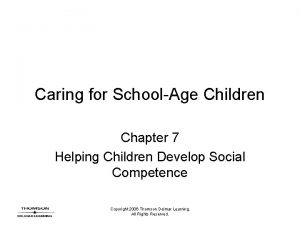HELPING OUR CHILDREN TO ACHIEVE IN MATHS Maths





















- Slides: 21

HELPING OUR CHILDREN TO ACHIEVE IN MATHS Maths: Information For Parents Tuesday 14 th November 2017

Our aims for today To outline the maths curriculum. To learn how children complete calculations at St. Ambrose. To share some of the activities that we do in school To provide ideas on how you can support your child at home To show that maths is fun

NATIONAL CURRICULUM AIMS

MATHS CURRIULUM

CALCULATION POLICIES

ADDITION AND SUBTRACTION Addition 247 +125 = C P A 247 +125 372 1

ADDITION AND SUBTRACTION Addition 365 +85 = C P A 365 + 85 440 1 1

SUBTRACTION 232 – 114 = C A P

SUBTRACTION Try 408 – 255 =

MULTIPLICATION 18 x 3 = CP A 18 x 3 54 2

LONG MULTIPLICATION P A 1 5 4 8 0

MULTIPLICATION Try 16 x 4 = and 16 x 24 =

DIVISION 48 divided by 4 = 2415 divided by 6 = 1830 divided by 15


DIVISION 68 divided by 4 = 1415 divided by 6 = 1230 divided by 15

PROBLEM SOLVING

PROBLEM SOLVING TYPES THERE ARE 5 PROBLEM TYPES THAT NEED TO BE TAUGHT. EACH OF THESE INVOLVE DIFFERENT REASONING AND THINKING SKILLS. Pattern problems and puzzles Finding all possibilities Word problems Logic / deduction Problems Diagram / visual problems

MATHS HUNT The children complete a maths hunt aimed at their ability. Children start at different questions, and then calculate the answer to the problem. This answer is at the top of another problem which signifies to the children they got the answer correct. They then complete the next problem and so on until they complete all the problems. See example.

Our aims for today To outline the maths curriculum. To learn how children complete calculations at St. Ambrose. To share some of the activities that we do in school To provide ideas on how you can support your child at home To show that maths is fun

Helping at home Some Dos… • • Play (maths) with your child There are opportunities for impromptu learning in games with real people that you can't get from a DS or Xbox Let your child win or be better than you Otherwise all they learn is that you are better at maths than them Recognise that there is more than one way of doing calculations You may have learned one method, but children are actively encouraged to seek out alternative methods in school and choose one which works for them, no matter how long winded Be an actor Get excited about maths and your child will get excited too …And Some Don’ts! • • • Don't expect them to understand after you've explained it once It is normal for a child to 'get it' one day, and then in a different context not know how to find an answer Don't tell them you are hopeless at maths You may remember maths as being hard, but you were probably not hopeless, and even if you were, that implies to your child, “I was hopeless at maths, and I'm a successful adult, therefore maths is not important” Don't get into an argument over homework It will be something that your child has covered in class, and if they really can't do it without a lot of tears and frustration, leave it and LET US KNOW!

FEEDBACK Please complete the feedback form
 All 23 linking verbs
All 23 linking verbs Awareness of ourselves and our environment is
Awareness of ourselves and our environment is Our census our future
Our census our future Our awareness of ourselves and our environment.
Our awareness of ourselves and our environment. Bernadette farrell christ, be our light
Bernadette farrell christ, be our light Our awareness of ourselves and our environment.
Our awareness of ourselves and our environment. Our life is what our thoughts make it
Our life is what our thoughts make it God our father christ our brother
God our father christ our brother Marcus aurelius our life is what our thoughts make it
Marcus aurelius our life is what our thoughts make it We quail money makes us quail why?
We quail money makes us quail why? Thinking affects our language, which then affects our:
Thinking affects our language, which then affects our: Our future is in our hands quotes
Our future is in our hands quotes We bow our hearts we bend our knees
We bow our hearts we bend our knees Awareness of ourselves and our environment is:
Awareness of ourselves and our environment is: Our census our future
Our census our future Why was italian unification difficult to achieve
Why was italian unification difficult to achieve To achieve reliable transport in tcp
To achieve reliable transport in tcp Informal structure in a bureaucracy example
Informal structure in a bureaucracy example Nj achieve principal evaluation
Nj achieve principal evaluation If you can imagine it you can achieve it
If you can imagine it you can achieve it Mountain island elementary school
Mountain island elementary school Achieve
Achieve
